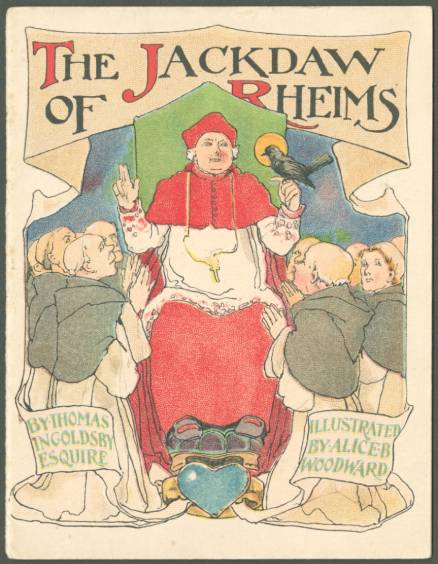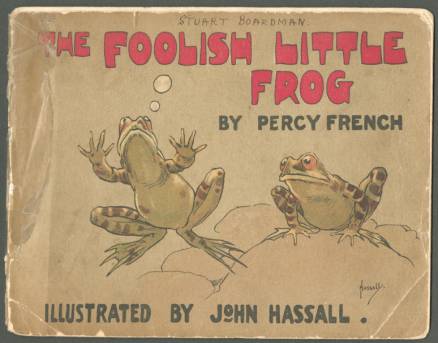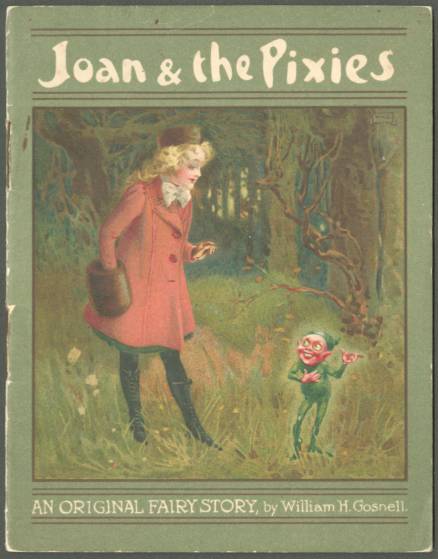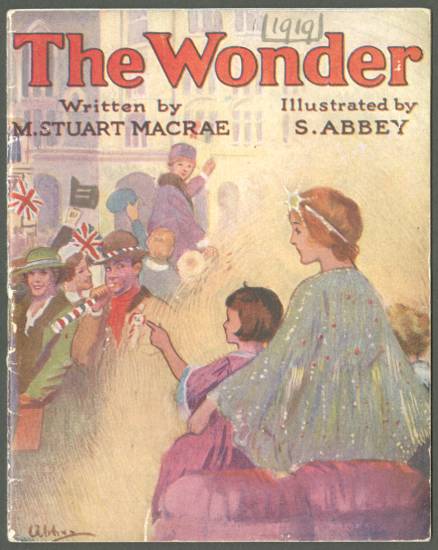A Charming Collection: How Colman's Incorporated Advertising into Children's Books
Earlier this year The History of Advertising Trust was delighted to be asked to offer a home to material from the archives of iconic Norwich brand Colman’s, which had previously been held at the Mustard Shop and Museum. The collection included a wealth of packaging and advertising materials, alongside many fascinating items recording the history of both the Colman family and company. Particular highlights of the collection are the charming children’s illustrated booklets produced every Christmas between the 1880s and 1950s.
‘…the up-to-date advertiser does well to consider in what way the little ones can assist him in his own special work.’ (A.E. Bull, 1926).
J. & J. Colman Ltd. certainly employed a range of creative ways to take Bull’s advice. Between 750,000 and a million copies were printed each year carrying the message ‘With Xmas greetings to their young friends all over the world from J & J Colman Ltd.’
 The Jackdaw of Rheims, 1901 (HAT23_3)
The Jackdaw of Rheims, 1901 (HAT23_3)
These booklets performed the dual tasks of not only being great artistic achievements but powerful advertising tools. They were often the first book the child owned and unlike transitory items were kept throughout their lifetime. One businessman expressed his admiration for them in 1926, ‘I know these stories by heart now, for my little boy likes it read to him. He is the most persistent advertiser I ever met in my life.’ Indeed, Colman’s certainly recognised their value since by the 1950s about £5,000 a year was being spent annually by the company on the booklets.
The production of the booklets up until 1900 was overseen by Charles Clowes of the Advertising Department, who was responsible for commissioning a wide range of high quality illustrations and colour reproductions. Artist John Hassall, whose most famous work was the ‘Jolly Fisherman’, was responsible for the Colman’s Mustard posters The Mustard Girl, To Klondyke and Returned from Klondyke. Hassall also produced The Foolish Little Frog, an illustrated poem, in a similar style to his posters, which were influenced by Japanese prints using pale flat colours. The booklet told the tale of an ill-advised frog who repeatedly turned down a meal and is in closing reminded ‘To the silly little sinner, who hasn’t had his dinner - it’s a long, long time, till tea!’. From children’s book illustrator Alice B. Woodward, Colman’s commissioned several beautifully drawn booklets including her interpretation of the best known entry of the Ingoldsby Legends, The Jackdaw of Rhiems (1901), in which a newly pious Jackdaw is canonised and given the name St. Jim Crow.
 The Foolish Little Frog, 1900 (HAT23_3)
The Foolish Little Frog, 1900 (HAT23_3)
Generally, up until 1914 the advertising in these booklets was very discreet, ‘The story should not be obviously an advertisement’ (A. E. Bull). Pure advertisements for mustard, starch and blue, whose illustrations were linked to the story, were confined to the back and inner pages of the cover, sometimes with faint slogans printed on the margins.
Production of booklets in this time period can be split into three categories: fairy tales, comic books and instructional booklets. Fairy tales such as Joan and the Pixies (1910), where a young girl dreams of adventures with mischievous pixies, were seen as particularly effective advertising vehicles owing to their innocent nature. Whereas less fanciful subjects were covered in booklets encouraging the study of nature. ‘Pet Land – our pets and how to treat them’ (1905) marked the beginning of a more overtly promotional tone - ‘If you would be patriotic and wise, support tried friends and home industries, and use Colman’s Mustard, starch, self-rising flour, blue and cornflour.’
 Joan and the Pixies, 1910 (HAT23_3)
Joan and the Pixies, 1910 (HAT23_3)
From the end of the First World War in 1918, the booklets were more noticeably linked to contemporary events, along with much more emphatic references to Colman’s products. Pre-war booklets generally reinforced patriotic feelings, whereas, by the time The Wonder (1919) by M.S. Macrae and illustrated by S. Abbey was produced, the nationalistic and moral message it promoted could hardly have been more obvious. In a surprisingly dark toned volume two, children, Hoblin and Twinkle are shown the ravages of war by a kind fairy - ‘Right eventually wins over Might’. With the coming of the wonder of peace, the Kaiser is shown alone without a Kingdom, facing the prospect of reaping the terrible consequences of his actions in this life and the next.
By the 1920s and 1930s clear links in the booklets were being made between the children’s minds and products by ‘character advertising’, such as the creation of The Three Mustardeers. In Mustardventures on Mars, 1935, Colman’s products become the hero of the story. Peter is saved from imprisonment by the King of Mars by suggesting he takes a Colman’s Mustard bath, and enjoying a pie made with Krusto and served with Colman’s Mustard. However, this later period also saw a decline in the quality and imagination of illustrations used, perhaps to be more economically efficient.
 The Wonder, 1919 (HAT23_3)
The Wonder, 1919 (HAT23_3)
Ultimately, the fact that these booklets were until very recently still being presented to the Colman’s archive, having been treasured for many decades, speaks not only of the warm regard they were held in, but also stands as a testament to the creativity and imagination of the Colman’s advertising department.
Bibliography:
The Advertising Art of J & J Colman Ltd, Yellow White and Blue
Written by Clare Smith, Collections Assistant
« All News Articles